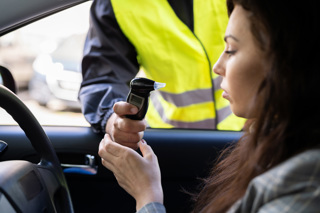The Government’s latest road casualty figures reinforces the need for the London Mayor’s Vision Zero approach, says Transport for London (TfL).
The Casualties in Greater London report shows that 131 people were killed and 3,750 were seriously injured on London’s roads last year.
The number of overall casualties fell by an estimated 1% compared to 2016, but reaffirms the Capital’s ambition to eliminate all death and serious injuries from London’s roads by 2041.
Lilli Matson, director of Transport Strategy at TfL, said: “These new figures show why our Vision Zero approach is so important.
“We refuse to accept that any death or serious injury on London’s roads is acceptable or inevitable and will continue to work with the police and all boroughs to meet our target of eliminating all death and serious injury from London’s roads by 2041.
“This work includes targeting dangerous drivers, investing in safer junctions, removing the most dangerous heavy goods vehicles from London’s roads and working closely with boroughs to implement 20mph speed limits, as well as delivering lower speed limits on parts of our own Transport for London Road Network.”
People walking, cycling or riding motorcycles made up more than half of all casualties on London’s roads and 87% of all deaths.
The number of people walking who were killed or seriously injured in 2017 increased by an estimated 10%, while the number of people cycling who were killed or seriously injured reduced by an estimated 1% and motorcyclists increased by an estimated 5%.
In July the Mayor and TfL launched a Vision Zero action plan which includes the introduction of lower speed limits on TfL’s road network, the transformation of dangerous junctions and joint work between TfL and the police to enhance enforcement activity.
It also features a focus on the most dangerous drivers, and a comprehensive bus safety programme including speed-limiting technology, new innovative training for all bus drivers and other measures.
Later this year, TfL will launch a Freight Action Plan that sets out new actions to improve the safety of HGVs, that are involved in a disproportionate high number of collisions involving people walking and cycling.
Tf has also developed the world’s first Direct Vision Standard, which rates HGVs based on how much the driver can see directly through their cab windows.
HGV blind spots are a major contributory factor in fatal collisions involving cyclists and pedestrians.
The standard focuses on the visibility from a driver’s cab, directly tackling blind spots, and uses a ratings system to make sure that only vehicles suitable for the urban environment can use London’s roads. The first permits under the system will be issued next year.
For motorcyclists, TfL is taking a range of action, including offering three free training courses in the capital, which boost rider confidence, skills and knowledge before and after Compulsory Basic Training (CBT).
In addition, TfL is expanding the existing Fleet Operator Recognition Scheme (FORS) accreditation scheme to include a standard for the motorcycle courier sector.
As part of the Healthy Streets Approach, the Mayor is also investing £169 million per year on cycling infrastructure over five years, including new Cycle Superhighways, Quietways, and improving London’s most dangerous junctions.






















Login to comment
Comments
No comments have been made yet.